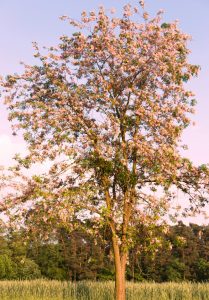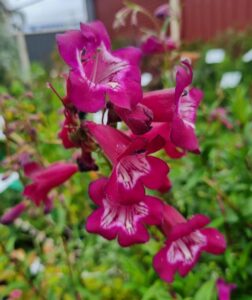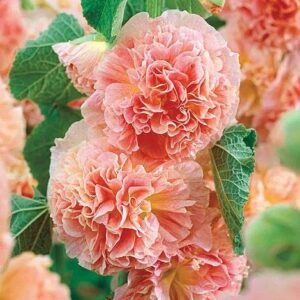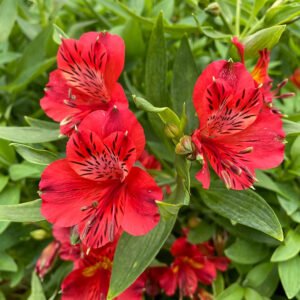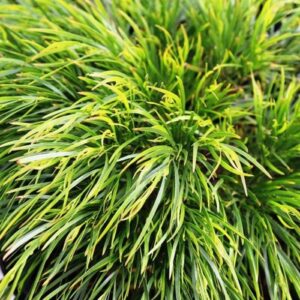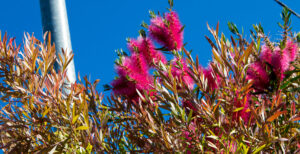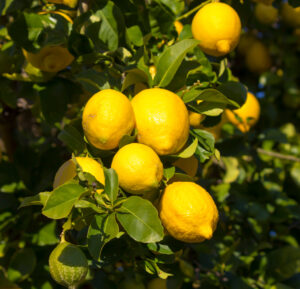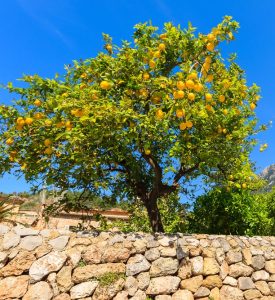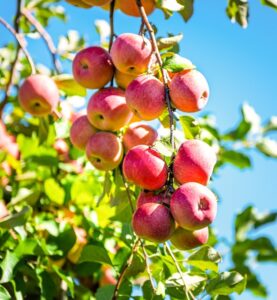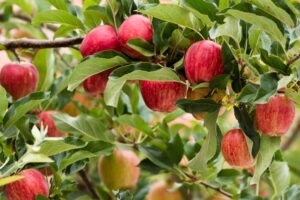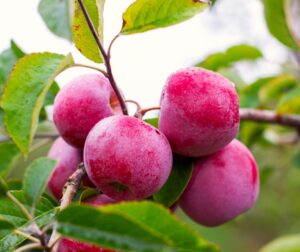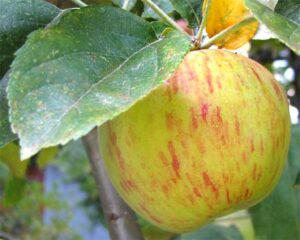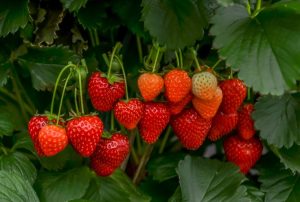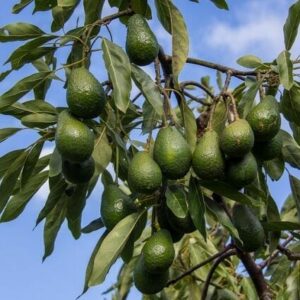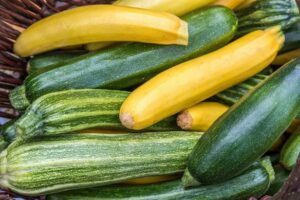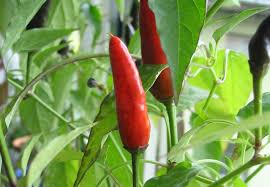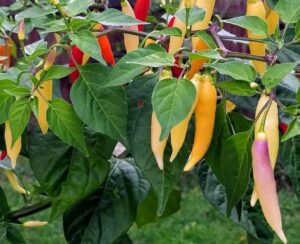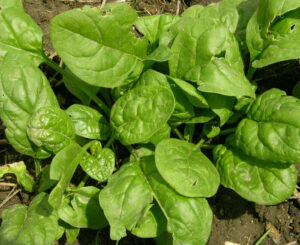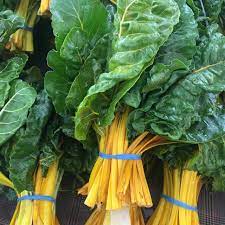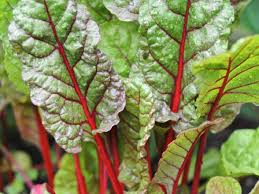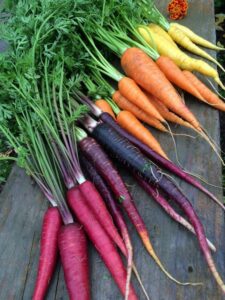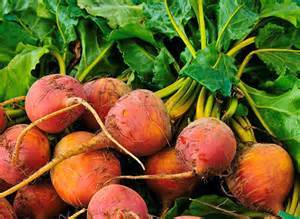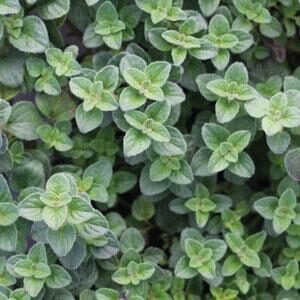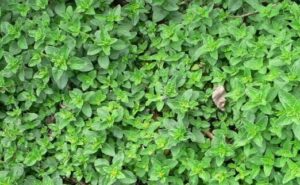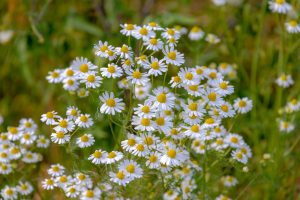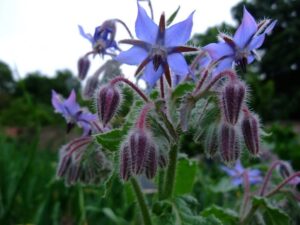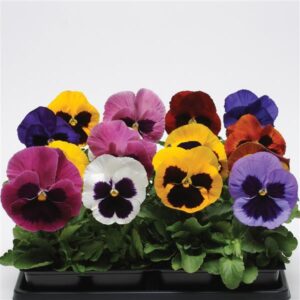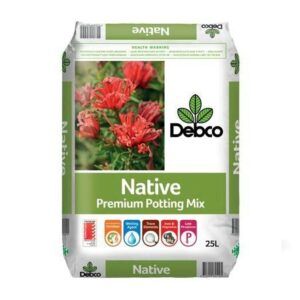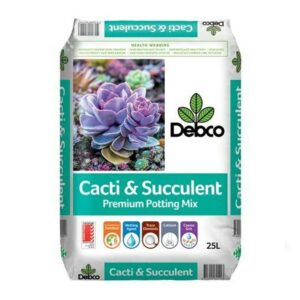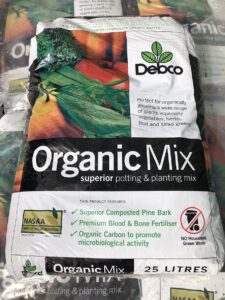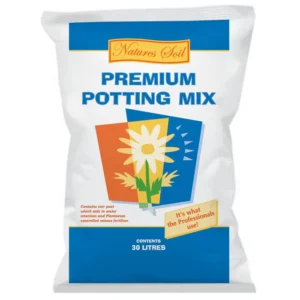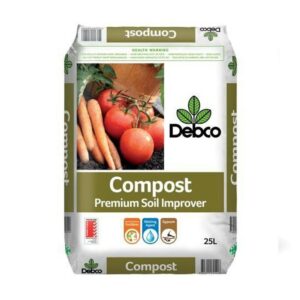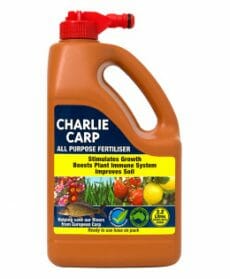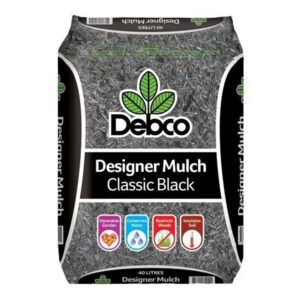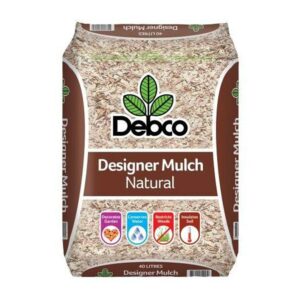
November in the Garden 2022!
Hello Hello, dear gardening friends! It is already November and we are having quite a lot of rain here in Victoria with a few cool nights, followed by some warm days with much-needed sunshine! Things are starting to take off in the garden and we are being blessed with lots of blossoms and lush green foliage!
 Traditionally Cup weekend has been used as a marker to plant out tomatoes and other summer crops, so if you have not done so yet, now is the time!
Traditionally Cup weekend has been used as a marker to plant out tomatoes and other summer crops, so if you have not done so yet, now is the time!
Callistemon, Geraniums, roses, and other cottage flowers are blooming beautifully, while Hydrangeas and Agapanthus are getting ready to bloom in the next couple of weeks. Summer veggies like tomatoes are growing very well and will soon require stakes to keep them from falling over and peppers are getting taller every day. From clipping back your spring-flowering plants to mulching, there is always a lot to do, so let’s see what can be done in the garden right now.
We also have some fantastic deals such as:
⭐Spend over $200 and get Free Delivery to Metro Melbourne and major regional centers!
⭐Get Free Plants with our Rewards Program!
Top Specials for the month!
Here are our best specials for the month!
-
-
-
Robinia decaisneana ‘Pink Wisteria Tree’ 8″ Pot
0Original price was: $39.99.$29.99Current price is: $29.99.
Bulk Deals
Need a large lot of plants for a garden or landscaping project and want wholesale prices? We provide bulk discounts of up to 75% off on certain varieties and sizes when you buy in bulk!.
Click here to see all our bulk deals!Maples
This is a great time to choose your maple as they are growing new leaves, putting on an amazing display, with their spectacular array of foliage types and colours. Maple trees can provide a striking focal point in your garden, be the perfect plant to put in a large container on your patio or grow into an impressive bonsai specimen. We have dozens of Japanese maple varieties in various sizes, with a large assortment of leaf shapes and colours ranging from shades of green to orange, red, purple, pink and variegated.
-
Acer ‘Bloodgood’ Japanese Maple 16″ Pot
0Original price was: $299.99.$269.99Current price is: $269.99.
Click here to see all our Maples!
Cottage & Summer Flowers
• We have a fantastic selection of perennial flowering plants in store right now that are already flowering or just about to flower. You can easily plant these in your garden to make it pop with interesting textures and colors all Summer long.
Roses
Most roses are blooming beautifully at this time of the year. Now is a great time to choose which one is your favorite in terms of color and scent, so make sure you check out our range of roses in blooming right now. It is also a good time to feed your roses with some balanced, bloom, or rose fertilizer. Keep an eye out for aphids that love to feed on the fresh new growth.  A good tip for more blooms on your roses is to dead-head the spent flowers regularly as this encourages more flowers. Avoid overhead watering as this can cause fungal problems. Watering early in the morning is better than in the evening. Once established, roses are quite drought hardy so water deeply only every so often. They are available in several forms such as bush form, climbing form, carpet roses, weeping roses and as standard (ball on a stick).
A good tip for more blooms on your roses is to dead-head the spent flowers regularly as this encourages more flowers. Avoid overhead watering as this can cause fungal problems. Watering early in the morning is better than in the evening. Once established, roses are quite drought hardy so water deeply only every so often. They are available in several forms such as bush form, climbing form, carpet roses, weeping roses and as standard (ball on a stick).
Native Gardens
Native plants are very popular right now as they can easily be included in any type of garden. Native plants have so many advantages as they have lower maintenance requirements, are easy to grow, and quite hardy. They require less water and are wildlife-friendly. If you want a fully Australian native landscape, then a natural design and layout work best. Crushed granite on curved fluid pathways, timber sleepers for edging beds, and rustic garden sculptures all fit together very well. The Facebook page Australian Native Plant Enthusiasts forum is great for some native plant inspiration and one particular garden that always catches my attention is the Rosella Rise Native Garden of Deb MC. It has such a beautiful combination of plants, colors, and textures that it would inspire anyone to start a native garden! Be sure to click on the link to see more of that amazing Australian Native garden.  To create such a paradise, you can use a variety of grasses, desert plants, shrubs, ground cover, succulents, herbs, food plants, fruit and berries to create a diverse Australian native garden.
To create such a paradise, you can use a variety of grasses, desert plants, shrubs, ground cover, succulents, herbs, food plants, fruit and berries to create a diverse Australian native garden.
Standards
Standard plants are great for creating interesting gardens. They are easy to maintain and create a 2 -story layered garden effect with your standards at the top and other plants growing at the bottom.
-
Syzygium Lilly Pilly ‘Standard’ 3ft 8″ Pot
0Original price was: $49.99.$39.99Current price is: $39.99. -
Syzygium ‘Resilience’ Lilly Pilly Standard 8″ Pot
0Original price was: $59.99.$49.99Current price is: $49.99. -
Fruits
Picking your own home grown fruit, and enjoying them as fresh as they can be, is really a special feeling. Dwarf varieties require much less space, and they are happy to grow in big pots and keeping them trimmed them to your ideal size. Now if you have space, by all means, plant a full-size variety and put them in the ground and let them grow into bountiful monsters! You could then perhaps exchange or sell your surplus produce!
• Citrus plants. Citrus trees have been hard to get and in high demand this year, but this batch is new in. These are fantastic varieties that were originally destined for Victorian fruit farms, so you know they are born to produce fruit, plus they are very affordable.
-
-
-
Citrus ‘Lane’s Late Navel’ Orange 4L Pot
0Original price was: $54.99.$49.99Current price is: $49.99. -
• Apples ARE ON SPECIAL!! Grow a few different varieties for best pollination and better fruits!
• Berries are so yummy and easy to grow. We have a nice selection of blueberry, blackberry, and strawberries. Perfect for healthy breakfasts or desserts
-
Fragaria ‘Red Gauntlet’ Strawberry 6″ Pot
0Original price was: $12.99.$4.99Current price is: $4.99. -
• Various fruits. Here are some other interesting fruit trees for you.
Veggies, herbs, and Greens!
• Summer/Spring veggies such as tomato, peppers, squash, eggplants, zucchini, chilies, and basil can now be safely planted out in the ground! It is warm enough for them to grow beautifully. Remember to water them in properly with some seaweed fertilizers, which will help them settle in their new spot.
Tips for better tomatoes!
1. Work some rich compost in the soil and supplement with some calcium to avoid blossom end rot. 2. Plant your tomatoes at least 45 cm apart and bury the stems deeply. 3. Remove the bottom leaves and pinch off the side suckers. 4. Fasten them to a stake or in a tomato cage. 5. Mulch the soil and water regularly 6. Plant some companion plants around your tomatoes such as basil, chives, borage, nasturtiums, and marigolds as they deter pests. 
• Before planting your summer crops, dig in a generous amount of compost and manure in your veggie patch as these plants are quite heavy feeders. If you have experienced blossom end rot on your tomatoes in the past, it could be that your soil is deficient in calcium, and adding some garden lime will fix this issue. Just be aware that garden lime also raises the pH level of soils high in acidity, to make them more alkaline.
• Leafy greens such as lettuce, spinach, rocket, endive, silverbeet, mustard greens, and celery will all grow well in the garden right now until the early hot days of Summer are here. If you have limited space, you may want to favour Summer veggies instead and leave the leafy greens for the cooler months. You can also get creative and plant lettuce/rocket under or around your tomatoes/capsicums as they usually have shallow root systems that will not interfere too much. Planting them every couple of weeks will ensure a steady supply. See full list here.
• Root Veggies such as carrots, radish, turnips, parsnips, and beetroot are also great to plant right now. These are best sown directly in the soil. Young leaves can also make a tasty addition to your salads.
• Culinary herbs are really easy to grow and can be grown in pots on your balcony or your patio. They will grow well in shaded, partly shaded and sunny spots. You can harvest them and they will simply grow back. You can also chop them up, dry them and create your own mixed herbs for later use. Once you start planting your own herbs, you will never buy them at the supermarket again.
• Herbal Teas are perfect to aid digestion, sleep, and have many other beneficial virtues. You can either dry the leaves up for storage or use them fresh.
• Edible flowers look great in the garden and also in salads!
Christmas Trees Selection!
Coming soon!
Here are some tips for your potted live Christmas trees on how to take care of them so as they can be used over and over again for the next 10 years!
• Sunlight – It’s recommended that you keep your potted tree near a window that receives sunlight but has protection from the hot afternoon heat.
• Lack of sunlight – If the spot where you will place your Christmas tree is where it will not receive any natural sunlight or reflected light, you should bring it indoors as late as possible. The weekend before Christmas is ideal, and it’s advised not to keep living trees in the house any longer than 20 days. But if it does receive some sunlight indoors, it can stay a bit longer.
• Watering – As with most houseplants, watering is the most important aspect of caring for them. Too much and your potted tree will die of ‘wet feet’, too little and the leaves will turn brown and fall. So water sparingly and do a simple moisture check by stick your finger into the dirt as far down as you can and see if the soil is dry. When you remove your finger, any soil sticking to it indicates moisture. When your finger comes out relatively clean, it’s time to water. Always check that the container has good drainage and some sort of saucer underneath to catch any excess water.
• Sunburn – After you’ve used it as your Christmas tree put it out in the shade for a couple of months, then slowly move it back into the sun around Autumn. If you just put it back in the full summer sun directly after being indoors for a long time, the leaves will get sunburnt and turn brown.
• Root-Bound – After the Christmas period, check the roots of your tree. If the root-ball is getting too thick, loosen them up and plant your tree in a slightly bigger pot. If it is not a dense root-ball, they can be left in the same pot.
• Prune and shape your tree in winter to keep it neat and tidy. Be gentle with the pruning as they grow very slowly and bad pruning can take years to fix.
• Fertilise your tree at the start of spring with a balanced fertilizer to give it a good boost during its growing season and make it look lush for Christmas.
Pruning, Repotting & Weeding
• Spring flowering bulbs should be pulled out of the ground, trimmed of any shoots and excess roots, the soil is gently brushed off and the bulb is let dry. Then you can store them in a paper bag in a cool dry place over summer and autumn until it is time to plant them again.
• If your potted plants are looking overcrowded, you can always trim them or split and re-pot them into new pots. Make sure to use the right potting mix for them.
• Scraggy plants. If you have tried to revive and fertilize old and sad-looking plants to no avail, perhaps it is time to replace them. Rework the soil after pulling them out and let it settle for a week before planting a new plant there.
• Always stay on top of the weeds. With all the Spring flowers blooming and then releasing their seeds in the wind, you will see small seedlings popping up everywhere. It is easier to get them while they are still small by disturbing the topsoil and applying some mulch.
Soil, Fertilising, and Mulching
• For your veggie patch, if you have very poor soil, mix in generous amounts of rich compost, manure, and also some blood and bone meal. If your soil is already quite good, instead of turning it over, try top dressing. Turning the soil over when you already have healthy soil will disturb the delicate worm and microbial systems, which take time to build and are important for good plant development.
• Put some rich compost or well-aged manure around your fruit trees, to give them the well-needed boost for the Summer fruiting season.
• It is best to give some liquid feed to Summer flowering annuals every couple of weeks with a complete liquid fertilizer, to encourage healthy and vigorous new growth. You can also add some slow-release granular fertilizer that will feed your plants over a period of 3 to 6 months.
• When the summer heat comes round, it is important to have a nice thick layer of mulch on your soil to keep some moisture in the ground and also keep the roots of your plants cool. This will reduce the frequency of watering and prevent your plants to go through heat and drought stress. If you are putting mulch for the first time, make sure to choose the right ones as they change the PH of the soil when they break down. Pine bark mulch creates acidity when breaking down, so it is perfect for Azaleas or Camellias, whereas straw or sugarcane are recommended for veggie beds. Do not put mulch too close to the stems but rather around it, as this will encourage the roots to grow outwards to find water and make them stronger. Also, make sure to give the soil a good soak before mulching. When watering over mulch, it needs some extra water to make sure it penetrates into the soil.
Pests & Disease
Now that there are lots of new shoots and seedlings, coupled with some warm weather and a few showers here and there, there will be more insects in the garden. The humid weather is perfect for them to proliferate, feed, and cause damage to plants.
• Aphids, thrips, and mites. With the warm weather, these sap-sucking insects find their way into our garden to feast on all the new growth. If there are not too many, you can leave them to help build the beneficial insect population that will then take care of the bad bugs for you later on. Adult aphids eat thrips and mites and ladybugs also eat aphids, thrips, mites, and whitefly If you have an infestation, on the other hand, you can make some homemade aphid spray to apply under the leaves of affected plants. Mix 2 tsp vegetable oil, 1 tsp dishwashing liquid, and some garlic cloves crushed, mixed in 1lt of water, and left to infuse overnight. This is completely safe for other beneficial insects. Also, think of planting some beneficial insect plants that will attract ladybirds and they will take care of aphids for you. A favorite plant for ladybirds is the Angelica herb.  • For ants you could sprinkle some diatomaceous earth on the ground where there is a lot of ant activity but only when it is dry. You will have to reapply it after it has rained. It is a natural organic control method that will not harm other insects.
• For ants you could sprinkle some diatomaceous earth on the ground where there is a lot of ant activity but only when it is dry. You will have to reapply it after it has rained. It is a natural organic control method that will not harm other insects.
• Azalea Lace Bug damage to azaleas normally occurs on the leaves and will look like silvery, white, or yellow spots. This is caused by these azalea insects, literally sucking small sections of the leaf dry and killing that section of the leaf. As these azalea leaf pests move on across the leaf, more and more spots will appear. These azalea insect problems are best avoided in the first place. The azalea lace bug tends to attack plants that are already weakened due to poor fertilizing or watering, so make sure to take proper care of your plants.  If your azalea shrub is already infested with these azalea leaf pests, you can try one of two methods for getting rid of them. The first is chemical controls and the other is organic control. Chemical control involves using insecticidal soaps (some of which are organic). Most off-the-shelf insecticides will effectively kill azalea lace bugs. For organic control of these azalea insects, you can try several methods. The first method to try is to spray the plant down with a sprayer on the hose. This can knock the pests of the plant and disorient them enough to prevent re-infestation. • Codling Moth attacks Apples and Pears. The moth lays its eggs on leaves and immature fruit as flowering finishes. The hatching caterpillars then burrow into the fruit and eat it from the inside. Yates Success Ultra is a good product to control these. You can also use organic control methods such as neem oil or even physical barriers such as fruit bags. Welcoming beneficial insects in your garden will also help with the control of codling moths.
If your azalea shrub is already infested with these azalea leaf pests, you can try one of two methods for getting rid of them. The first is chemical controls and the other is organic control. Chemical control involves using insecticidal soaps (some of which are organic). Most off-the-shelf insecticides will effectively kill azalea lace bugs. For organic control of these azalea insects, you can try several methods. The first method to try is to spray the plant down with a sprayer on the hose. This can knock the pests of the plant and disorient them enough to prevent re-infestation. • Codling Moth attacks Apples and Pears. The moth lays its eggs on leaves and immature fruit as flowering finishes. The hatching caterpillars then burrow into the fruit and eat it from the inside. Yates Success Ultra is a good product to control these. You can also use organic control methods such as neem oil or even physical barriers such as fruit bags. Welcoming beneficial insects in your garden will also help with the control of codling moths.  • Keep an eye out on your Rose plants for common diseases such as black spot, rust, and mildew. If you have noticed any fungal disease in the past on your plants, now is a good time to spray them with some organic copper-based fungicides.
• Keep an eye out on your Rose plants for common diseases such as black spot, rust, and mildew. If you have noticed any fungal disease in the past on your plants, now is a good time to spray them with some organic copper-based fungicides. 
That’s it for this month!
Wishing you all the best in the garden! Keep smiling, be happy and as usual, stay safe lovely people 🙂 
Gardening November Melbourne 2022, Victoria, Australia.





